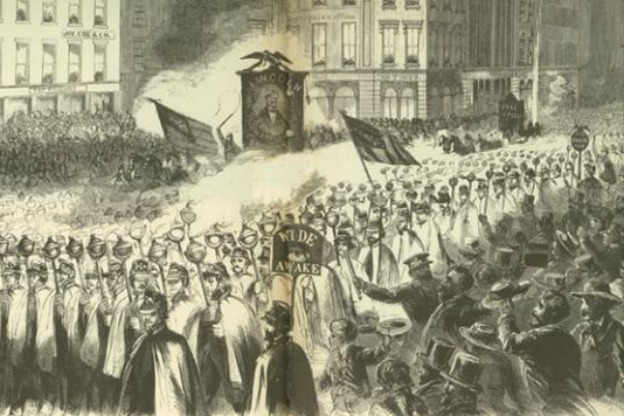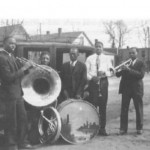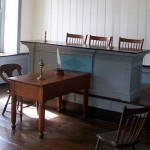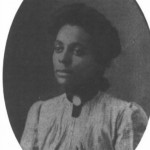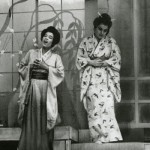Intimidation of non-whites at the polls was common during the 19th century, carried out by such groups as a paramilitary unit known as The Wide Awakes.
Long after the 15th Amendment to the Constitution was ratified, many white Hoosiers continued to work against enfranchisement for black citizens. Laws limiting the civil rights of African Americans were kept in the state constitution; in many towns and cities, black voters were intimidated or physically assaulted. The 1872 elections saw several such attacks; the 1876 elections in Indianapolis were the occasion for the worst recorded violence against black citizens.
May 3, 1876, was election day for Indianapolis city offices. As the day wore on, news began to spread in the city’s African American neighborhoods that black voters were being physically attacked and assaulted at the voting stations in Ward Six. A group of black citizens from the city’s fourth ward set out to investigate the rumors, and as they approached the voting site, they were met by police.
Armed with wooden spokes manufactured by a neighborhood wheel company, police had arrived in the Fourth Ward and been joined by white residents of the neighborhood. The combined group converged on the black citizens and violence broke out almost immediately; several African Americans were injured—one man stabbed, two or three shot, and several beaten. The man who had been stabbed later died from his wounds; there were no reports of injuries among the police or the white men present.
One Indianapolis newspaper reported that day that the voter suppression had been successful: “One man was knocked down and dragged out and others kept aloof from the polls rather than incur the risks of meeting alike fate.” The next day, the Indiana Sentinel, Indianapolis News, and Indianapolis Journal all carried stories about the events, but produced conflicting testimonials as to who had begun the riot.
The Sentinel laid all of the blame on the African Americans, claiming that they had arrived carrying bludgeons and describing them as “murderous” and “frenzied”; the same newspaper, in another story, declared that all black voters were “slaves” of the Republican Party, turned “vicious” by their new masters. Although several whites were arrested, all of the cases were dismissed.
Incidents of intimidation of black voters continued, although the violence of the Election Riot of 1876 was not repeated. It was not until 1881 that Article XIII of the 1851 state constitution, which denied nearly all rights to blacks, was struck from that document.
Sources: “Election Riot of 1876” from The Encyclopedia of Indianapolis, pp. 539-40; Emma Lou Thornbrough, The Negro in Indiana Before 1900 (1985), esp. chaps. 9 and 11.
A Moment of Indiana History is a production of WFIU Public Radio in partnership with the Indiana Public Broadcasting Stations. Research support comes from Indiana Magazine of History published by the Indiana University Department of History.










